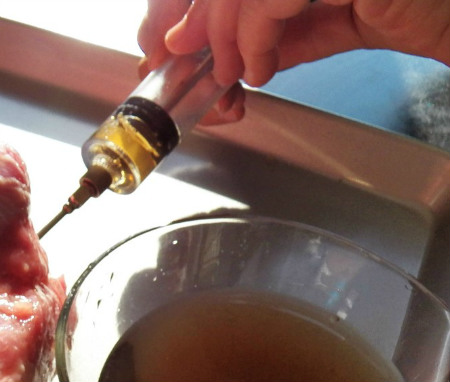Flavors
In Praise of Pork Shoulder, Part 2: Season It Like You Mean It

Photo by David McSpadden.
In Part 1 of this series, we gave you tips on buying pork shoulder, sometimes called pork butt, even though it has nothing to do with a hog’s hindquarters. Now you’ll learn how to coax the most flavor from this indispensable hunk of meat.
When it comes to seasoning pork shoulder, remember that a faint heart never won a poker—err, porker—game. You have options:
Rub: We Americans use rubs with greater imagination and with a freer hand than anywhere else on Planet Barbecue. And nothing is more amenable to a good rub than pork shoulder. Make your own—I’m partial to Raichlen’s Rub, a primal blend of salt, pepper, paprika, brown sugar, and other seasonings you probably have on hand in your kitchen. Or to make life easy, order a can of my All-Purpose Barbecue Rub. Apply it liberally to all sides of the pork shoulder and rub it into the meat just before cooking.
Get the recipe for Raichlen’s Rub.
Brine: A brine is a liquid seasoning containing water and salt, and sometimes, a sweetener (like sugar, molasses, honey, etc.), herbs or spices, and/or aromatics. A brine is a sort of marinade (but not all marinades are brines). Without getting too scientific, a brine not only adds flavor, but penetrates the meat and relaxes the coiled proteins in the muscles, making the meat moister and more tender. A reliable formula is 1 cup kosher salt (and an optional 1/2 to 1 cup of brown sugar) to 1 gallon of water. If desired, substitute apple juice or cider for half the water. Brine the pork for at least 8 hours, and up to 24. Note: If you brine your pork before cooking, ignore my advice above and go easy on the rub to avoid over-salting the meat. Or use a low-sodium rub.

Inject: Many competition barbecue teams add both moisture and flavor to pork shoulder by injecting it with seasoned liquids using large hypodermic-like needles similar to this one. Common ingredients include apple juice, chicken stock, Worcestershire sauce, honey, finely-ground spices, and sometimes, a liquid fat, like vegetable oil or melted butter or bacon fat. (Don’t use anything that will clog the needle.) This technique can be used in tandem with a rub—but again, go easy with the salt. Not to toot my own horn, but my Best of Barbecue Spice Paste Injector comes with a 1/4 inch nozzle and metal spike to enable you to squirt thick, flavorful spice pastes deep into the meat.
Mop: Like bastes, mop sauces keep food moist when it’s exposed to smoke or the dry heat of the grill. The name comes from the cotton mops pit masters once used to swab whole barbecued animals. (Fortunately, you can buy the mops in handier sizes today.) Alternatively, mops can be applied using a food-safe spray bottle. The simplest mop sauce is a beer: Put a thumb over the mouth of the bottle, agitate it, then aim the spray at the meat, using your thumb to control the stream. Start mopping after the first hour or two of smoking or grilling, repeating hourly.
Get the recipe for Cider Squirt Mop Sauce.